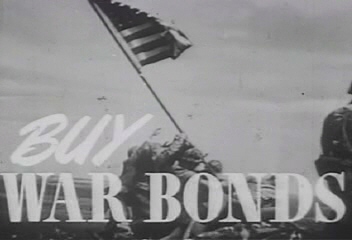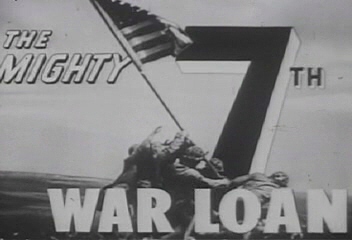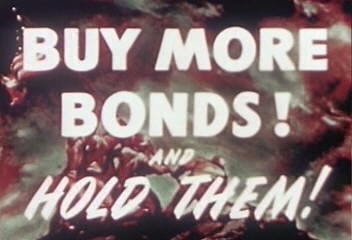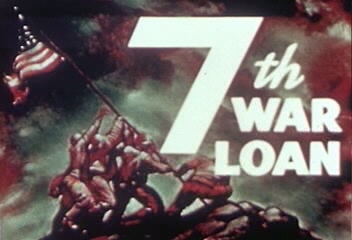The cost to the American treasury for the nation's involvement in World War Two was over $340 billion. In 2003 dollars, the cost would total almost $3.5 trillion. To fund the war effort, the U.S. Government used many methods. One way included War Loans or War Bonds. To promote these efforts, the U.S. Government created and presented movies in the nation's movie theaters. Unlike today, Hollywood created films lifting morale and supporting victory. Most times the film would have a patriotic theme. More than once the memory of the Japanese treachery at Pearl Harbor was evoked. The 1942 short film, "Avenge December 7", is a good example.


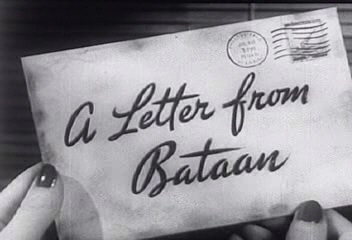
In 1945, My Japan was produced by the U.S. Treasury for the Seventh War Loan. The narration is told from the Japanese perspective and describes Japan in positive terms and mocks Americans.
The 16-minute video goes on to show real front line footage and many of the images are gruesome and violent.
On June 6, 1944, the Allied forces of the United States, Great Britain, and Canada stormed the beaches of Normandy, France and went up against Hitler's Atlantic Wall.
Before the beach landings of D-Day, American soldiers from the 82nd Airborne, 101st Airborne, and the 9th Troop Transport Command parachuted and flew gliders behind the German lines five hours before the start of the beach landings. The purpose: to soften German resistance and "to start the destruction of Fortress Europe". The movie D-Day Minus One recounts these efforts. If you can get past the introduction, it's worth watching. This 17-minute motion picture was part of the "Mighty 7th War Loan".
A rare color movie titled Remember These Faces (17 minutes), also produced for the 7th War Loan, shows American soldiers in action during World War 2. The images are real including a beach landing, men and machines in action, camaraderie, and the injuries sustained.

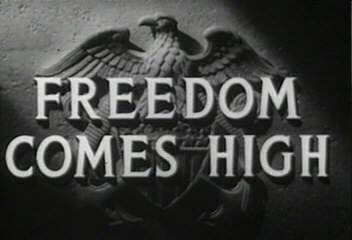
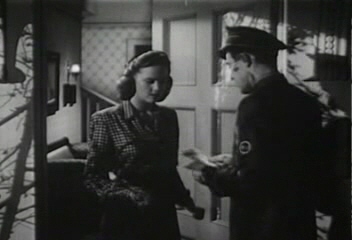
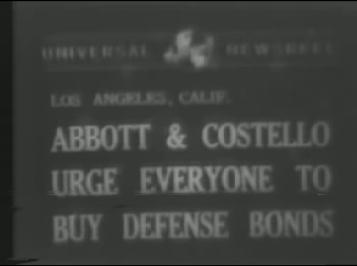
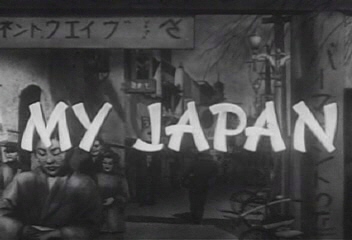
"The Japanese viewpoint...Japanese doctrine...with captured Japanese film. This is the way the enemy looks at the war...thinks it...fights it...to him, this is - My Japan".
Please note: The audio and video on this page require Windows Media Player and may take a moment to load.
Click the image above to watch the video.
Click the image above to watch the video.
Click the image above to watch the video.
Click the image above to watch the video.
Click the image above to watch the video.
Advisory: contains extreme violence
Click the image above to watch the video.
Click the image above to watch the video.
Please note: The audio and video on this page require Windows Media Player. The player will launch in a new window and the media may take a few moments to load.
During World War 2, Hollywood helped America's morale by creating entertaining and patriotic movies (unlike today). Many celebrities did their part toward victory. Bud Abbott and Lou Costello were two of Hollywood's best. In this Universal Newsreel from May 22, 1941, Bud and Lou pitch defense bonds.
Freedom Comes High from the U.S. Navy for the Sixth War Loan, in 1944, is a stirring 13-minute movie. The story is about a young wife, played by Barbara Britton of Mr. and Mrs. North fame, whose husband, played by James Craig, is overseas serving in the Navy. We learn how they met and how freedom sometimes has a high price
To help the war effort, citizens were encouraged to conserve resources. The 14-minute 1942 film A Letter from Bataan, starring Richard Arlen and Susan Hayward, starts with two anti-aircraft gunners who end up at a military hospital. The scene then goes to the Home Front where the letter is received by the mother of Johnny. The letter states the needs of soldiers - from vegetables and kitchen fats (used to make explosives) to antiseptic and more.






